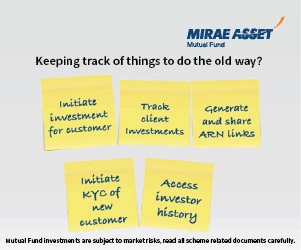A Real Alternative for Tax Free Bonds

When it comes to expectations of return on investments, there are broadly two types of investors. The first type of investors seeks higher returns with an objective of multiplying their investments over a period of time, and using investments to create wealth. Such investors typically invest into stock markets, equity mutual funds, make Systematic Investment Plans (SIPs) into funds, and the like. The second type of investors are risk averse, and tend to prefer safety, certainty and visibility of returns. Many critical investment goals indeed require the certainty of returns.
Consider the following goals:
- Someone has taken risks in their businesses or professional careers, and has reached a certain stage in their life, that they do not want to subject their hard-earned wealth to further risks. They simply want to preserve their wealth for a very long term, by investing into propositions, which could help them safeguard their wealth, while growing at a modest rate.
- Someone may want to pass on their legacy to the next generation – in a safe and an assured manner. Again, such individuals need investment avenues which would largely preserve their wealth until they pass on to the next generation.
- Let’s say a family is blessed with a newborn. The parent may want to ensure that the child’s higher education is well-planned and taken care of. The goal is perhaps 20-25 years away. The cost of higher education, say, a foreign degree costs Rs. 25 Lacs today. Can this individual have inflation-adjusted 25 Lacs in 20-25 years?
- Retirees require regular cash flows. Ideally, an inflation-adjusted annuity for a very long term. The retirement corpus should not get eroded due to inflation, and it should last a very long time, at least till such time the individual is alive.
- Lot of individuals also invest into Real Estate to get regular income – rental yield –and hoping that the property itself could appreciate over a period of time. Again, the requirement is moderate returns but with reasonable certainty.
For all the above goals, there are two aspects that are very crucial: 1. Reasonable certainty of Returns and 2. Long-term nature of the goals. Individuals typically prefer traditional fixed income instruments to meet such requirements. Fixed Deposits, Public Provident Fund (PPF), RBI Bonds, Tax-free Bonds, and the likes.
While each of the above investment avenues have their own merits and shortcomings, I would like to present to you the investment case for tax-free bonds, and what I believe is a better alternative for the same – a long-term debt fund with a unique strategy.
Tax-free bonds are fairly easy to understand. The last set of tax-free bonds were issued in 2015 by various Public Sector Undertakings. They came for tenures of 10, 15 and 20 years, and offered tax-free interest rates, which were prevailing then, and payable annually. In the last 3 years, there hasn’t been any fresh issuance of tax-frees. If you have to buy the existing bonds, you have to purchase in the secondary markets through exchanges. When the bonds were issued back then, the prevailing interest rates were higher. Therefore, the bonds paid nearly 8.5%-9% tax-free interest. Tax-free bonds are currently trading around 6.25%-6.5%, depending on the tenure and credit rating of the issuer. This means, if you have to buy a tax-free bond today, you will have to pay a higher price, which will equate your yield (or return) to 6.25%-6.5%. For a simple understanding, it is like this: you have to pay Rs. 144 to buy a tax-free bond, and if the bond pays you 9% interest, your effective yield is ~6.25% (9 divided by 144). Tax-free bonds necessarily pay out interests, and hence you will not have the option to compound your returns. But even if you were able to do the same, by reinvesting all your interest payments at 6.25% (practically not possible), Rs. 10 Crs invested would become Rs. 45 Crs in 25 years. By the way, the longest maturity of tax-frees available today is that of 2035, only 17 years.
Is there a good alternative for tax-free bonds?
A leading fund house has come out with a unique offering. This is an open-ended pure debt fund, which will invest into long-term Government of India bonds, in the 25-30 years segment. The fund would buy and hold these securities for a very long term, and hence proposes to align long-term investor goals (such as preservation of wealth, passing on legacy, child’s education, annuity for retirement, alternative for real estate investment, etc., that we talked about) with a long-term investment solution. By buying and holding the GoI Securities, the fund would earn all the coupons (or interest payment) paid by the bonds, would keep reinvesting them in similar securities, and in the process, offer broad certainty and visibility of returns. Currently, yields in the long-term GoI bonds are attractive, at over 8%. Hence, if you invest into this product, you would keep getting an equivalent of 8% coupon over a very long-term, which will form the foundation of your returns. The coupons will keep getting reinvested (GoI bonds pay semi-annual coupon), as and when they are received, at the prevailing yields. A combination of fixed coupons (around 8%), and the reinvestment of the same over the years, has the potential to offer you broad certainty and visibility of returns, for long-time periods, such as 10 years and more. You could use this product to align any of the above long-term goals. The fund is open-ended, and has no lock-in. Therefore, you could consider using this product to meet your long-term goals, as long as they are reasonably long-term, such as 10 years and above.
In terms of returns, while the said product is not a guaranteed or an assured return product, the underlying structure offers a fair amount of certainty (because of the fixed income coupons, and alignment of investment holding period and the strategy of the fund - of buying and holding securities for the long-term). Assuming current interest rates remain the same for 25 years (just for an assumption, like how we assumed 6.25% compounded for tax-frees), Rs. 10 Cr has the potential to grow to Rs. 60 Crs, post-expenses, and post-taxes in 25 years. Long-term capital gains tax post-indexation will be applicable to the product, at the time of redemption. Notice here that the tax incidence happens only at the time of your redemption; so, you get to defer your taxes for as long as possible.
To sum up, Rs. 10 Crs invested in tax-frees could become Rs. 45 Crs, while Rs. 10 Crs invested in this product could potentially become Rs. 60 Crs. A difference of 15 Crs on a 10 Crs investment! Is it time for you to consider moving some part of your fixed income allocation to this product? I strongly think so.
Comparison between Tax Free Bonds and Long-Term Debt Fund

Mutual Fund Investments are subject to market risk, read all scheme related documents carefully.
Queries
-
What is the benefit of mutual fund STP
Aug 29, 2019
-
How much to invest to meet target amount of Rs 2 Crores
Aug 26, 2019
-
Can I achieve my financial goals with my current mutual fund investments
Aug 24, 2019
-
Can you tell me return of various indices
Aug 19, 2019
-
What would be the post tax return on different investments
Aug 18, 2019
-
Which Principal Mutual Fund scheme will be suitable for my retirement corpus
Aug 16, 2019
-
What is the minimum holding period for availing NCD interest
Aug 4, 2019
Top Performing Mutual Funds
Recommended Reading
Fund News
-
Motilal Oswal Mutual Fund launches Motilal Oswal Diversified Equity Flexicap Passive Fund of Funds
Jan 2, 2026 by Advisorkhoj Team
-
Mr. Navneet Munot's 'Person of the Year 2025'
Dec 31, 2025 by HDFC Mutual Fund
-
Zerodha Mutual Fund launches Zerodha Nifty Short Duration G Sec Index Fund
Dec 26, 2025 by Advisorkhoj Team
-
Groww Mutual Fund launches Groww Nifty Chemicals ETF
Dec 26, 2025 by Advisorkhoj Team
-
DSP Mutual Fund launches DSP Nifty Next 50 ETF
Dec 19, 2025 by Advisorkhoj Team














